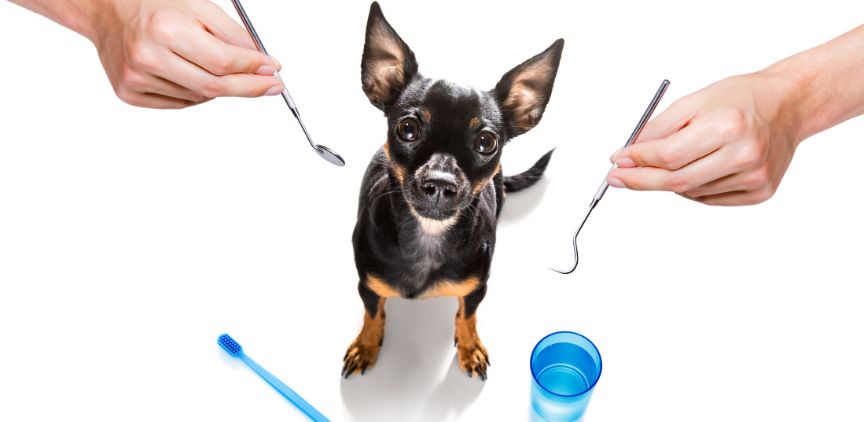Finding Great Coverage for your Furry Friend's Pearly Whites
What is Pet Dental Insurance?
Keeping your pet's teeth in good condition is critical to their overall health. Insufficient dental care can result in periodontal disease, a serious and painful health concern. Over 80% of dogs over the age of three have periodontal disease in varying severities.
Between 2017 and 2020, the average pet insurance settlement cost for dental problems in dogs was $1,942. That’s more than what most humans pay! When you consider the cost of dental disease to your pet's health and your wallet, it's a significant financial burden. Enter pet insurance!
However, not all pet insurance policies are created equal. Some cover dental care, but not all do, so it's important to do research. Here’s our guide to all things toothy for your pet: What does pet dental insurance cover, what is not covered under insurance, and how to save money on dental treatments for your pet.
What Does Pet Dental Insurance Cover?
Pet dental insurance is available in pet medical insurance policies, like those from ASPCA, Embrace, Trupanion, Spot, and Pumpkin. Although coverage varies according to the insurer, there are commonly two types of pet dental coverage: dental accidents and dental illnesses. These plans typically cost about $30 to $40 a month for dogs and $15 to $25 for cats.
Some providers cover both dental accidents and diseases, as well as dental disorders such as:
- Tooth decay.
- Root canal therapy.
- Dental crowns.
- Stomatitis.
- Gingivitis.
- Tooth extraction.
What Dental Procedures are not Covered by Pet Insurance?
Routine dental cleanings are classified as preventative care and they are usually not covered by a standard accident and illness policy. However, most pet insurance companies provide add-on policies that will compensate you for the expense of your pet’s dental cleaning.
Some insurers may have coverage criteria based on your pet's age, like needing an oral examination to discover existing health risks when dealing with pets over the age of three. Insurance policies will never cover pre-existing diseases and will only compensate you for aesthetic operations that are considered medically essential for your pet's health.
Here is a list of elective or cosmetic dental procedures that are typically not covered by pet insurance plans:
- Crowns caps.
- Amputations of the crown.
- Implants for fillings.
- Scaling.
Dental pet insurance policies are unlikely to cover medicines, equipment, or treatments linked to primary oral care, such as pet toothbrushes and toothpaste, dental chews, or dental supplements, in addition to dental services and procedures.
Is Dental Pet Insurance Required for my Pet?
The decision to purchase pet insurance is solely dependent on your financial means and the quality of healthcare you want to provide your pet. Even if you maintain good oral hygiene at home, your pet will still need professional dental treatment, especially when he or she ages and is more prone to dental problems.
All dental cleanings are done under general anesthesia so that your veterinarian may completely examine each tooth and gum tissue. Non-anesthetic dental cleanings are discouraged by the American Animal Hospital Association and the American Veterinary Medical Association.
Related Search Topics (Ads)
How to Choose the Best Insurance
Consider the following concerns while looking for pet insurance packages that offer dental treatment:
Size Of Your Pet
Dental coverage is often slightly more expensive for dogs than for cats, owing to size. Larger animals require more anesthetic medicines, greater medication dosages, and longer anesthesia and cleaning durations.
Age Of Your Pet
Due to health difficulties and supporting care, insurance policies for older dogs are often more expensive. However, they would certainly benefit from an accident and illness plan. You'd still have to pay out of pocket for routine cleanings with this plan, but your pet would be covered for things like mass removals, gingival hyperplasia therapy, and traumas like broken teeth.
Consider a plan that includes preventative treatment and routine cleanings for pets under the age of three. This sort of plan will assist you in managing routine dental care expenses for pets less prone to suffer from serious dental diseases.
Your Pet’s Overall Health
Insurance for pets with pre-existing medical disorders may be more expensive, or it may be excluded. Many medical issues might influence your pet's teeth, resulting in increased dental expenditures. To help prevent these issues, apply for coverage when you initially acquire your pet.
Consider your pet's routines and way of life. For example, if you have an active chewer, you can think about an injury and illness plan to treat broken and damaged teeth. Check to see if a plan covers breed predisposition or breed-related dental diseases. Boxers, for example, are prone to gingival hyperplasia, a gum tissue overgrowth that must be removed for oral health and cleaning.
How Can You Save Money on Dental Treatment for Your Pet?
Most vets recommend that dogs and cats get their teeth cleaned at their yearly check-ups. This can assist your veterinarian in detecting early indicators of health problems and will put your pet at a decreased risk of developing expensive dental illnesses later in life.
You can also maintain your pet's oral health by cleaning their teeth regularly. Brush your pet’s teeth twice a day, or at least three times a week. Cats should follow the same schedule. Start early, so your pet gets used to regular cleanings and will be less likely to make a fuss!
Dental hygiene treats and chews may also help in the maintenance of your pet's dental health between cleanings.
How to Find Low-Cost Pet Dental Care
If your pet requires medical attention, pet insurance might help keep you out of debt. The expense of veterinary care is rapidly rising, as is the difference between how much pet owners can afford and what the finest veterinary care costs. Pet insurance bridges the budget gap and can help pets enjoy longer, healthier lives.
Here are a few strategies to keep a pet's dental care costs down, in addition to a pet insurance plan with adequate dental coverage.
Practice Preventative Care
According to the American Veterinary Medical Association, many pets show early indications of periodontal disease by the age of three. It is critical to take preventative steps as they age so that dental issues do not worsen or damage their kidney or liver functioning.
Consider Purchasing a Pet Insurance Wellness Add-On
Even though no pet medical insurance policy covers basic dental treatment, you can purchase a wellness add-on that does. Adding a wellness plan to your coverage will raise the cost of your pet insurance but may offset the cost of dental cleanings, which may range from a few hundred dollars to over $1,000 depending on where you live. Wellness plans cost about $20 to $50 a month depending on the insurance provider.
Get A Plan With a Deductible
Most pet insurance plans come with a deductible and co-insurance aspect, which makes the premiums cheaper. You can set aside some money to cover some projected costs so that you don’t get sidelined.
When your pet is in pain or discomfort, the last thing you want to worry about is money. We hope this article has helped you to provide your pet with the best healthcare ever!

